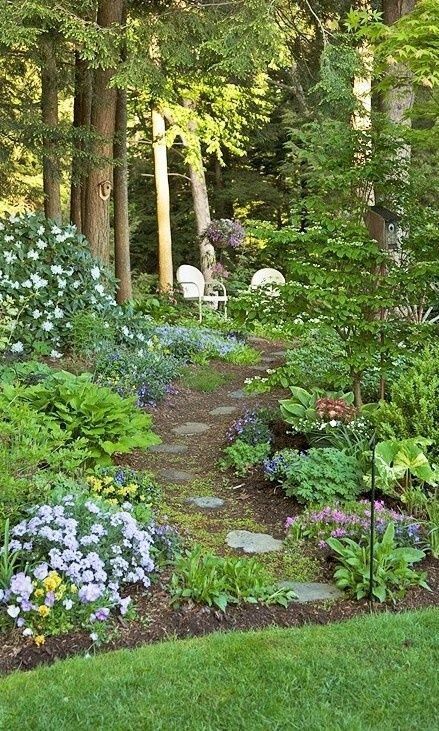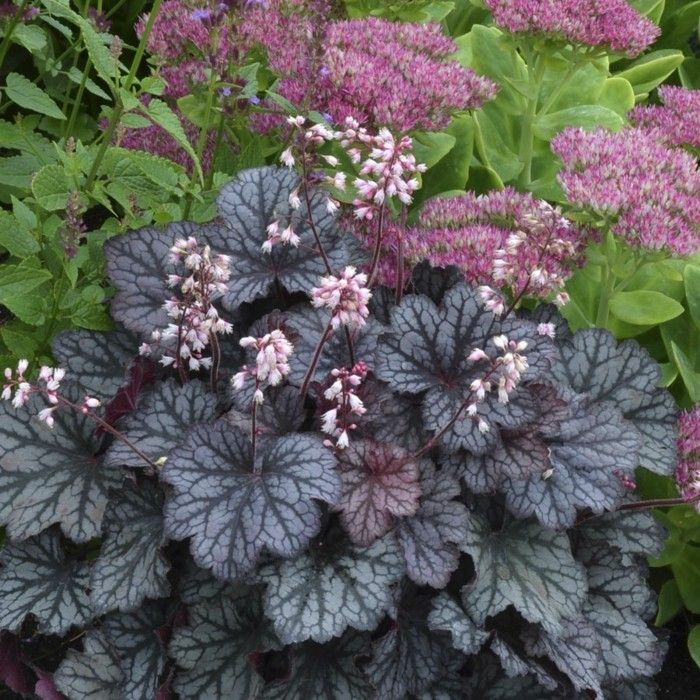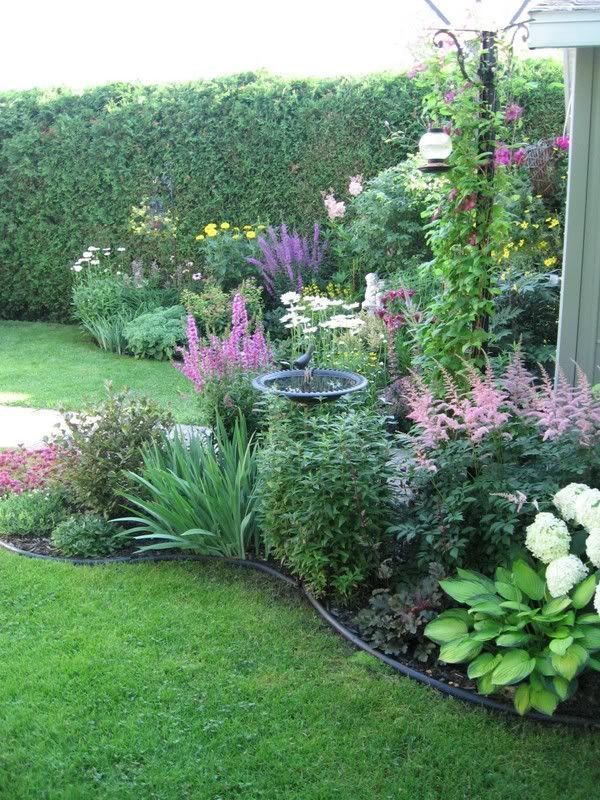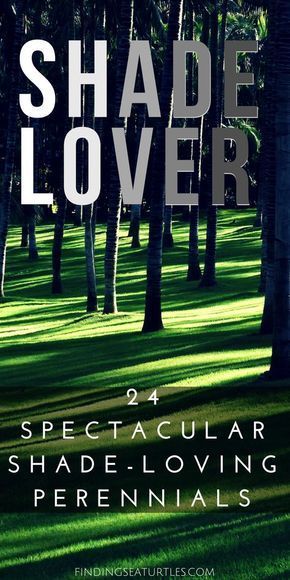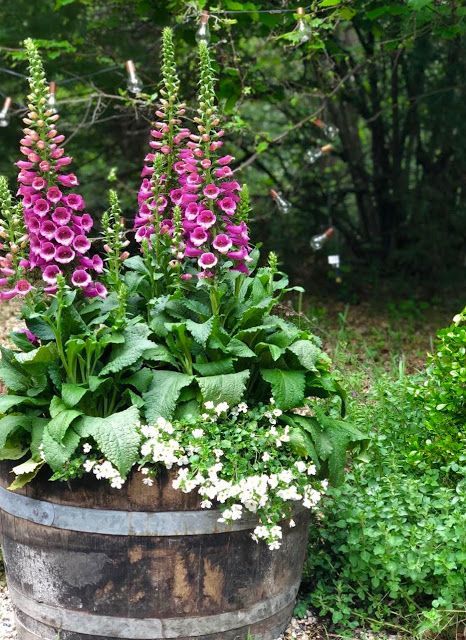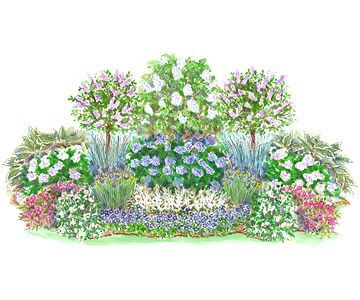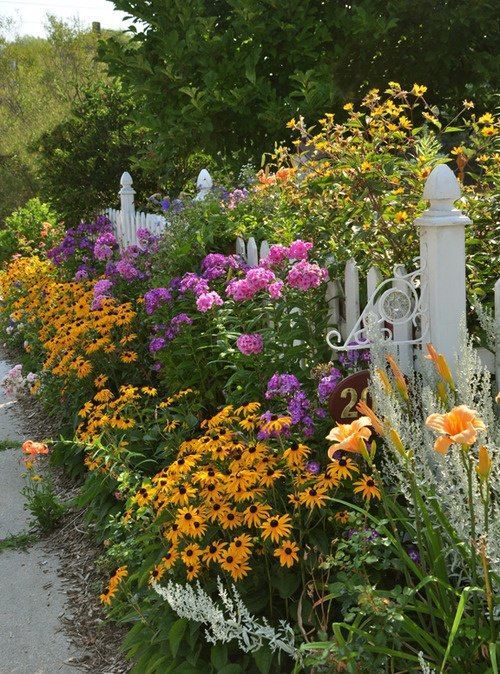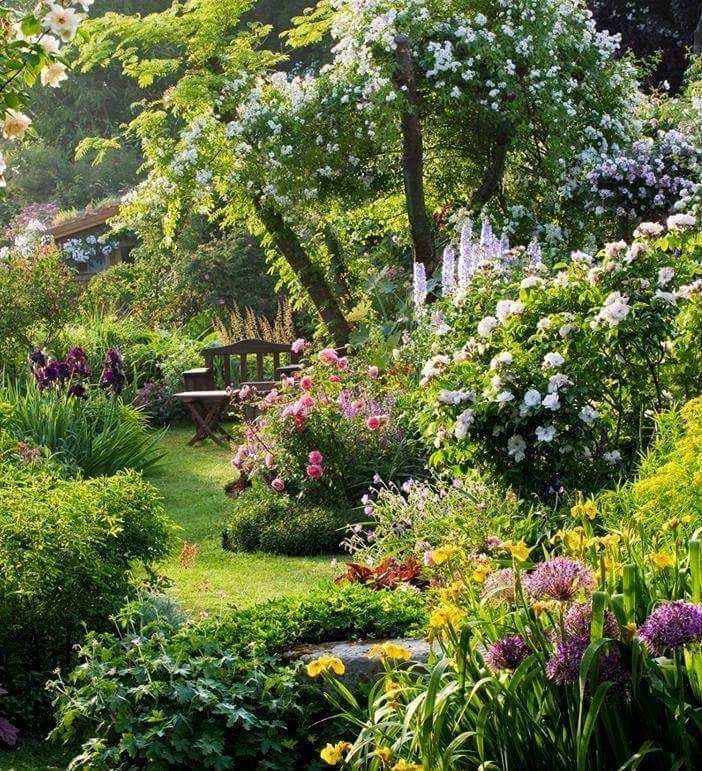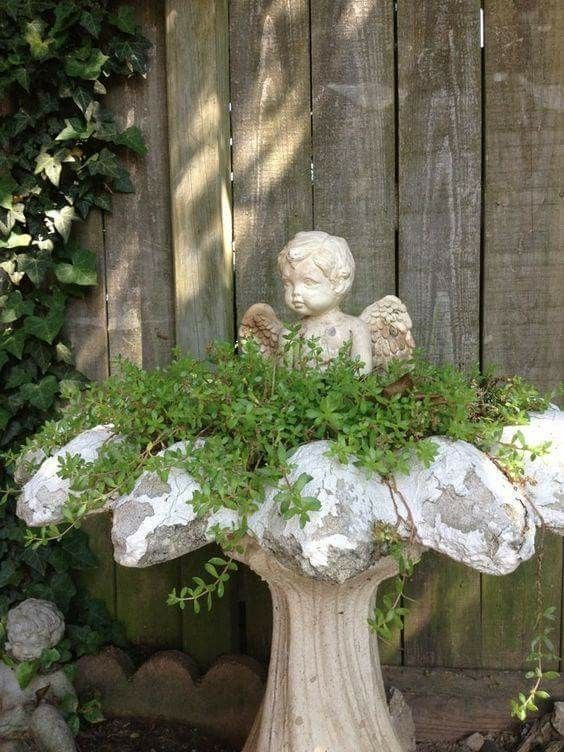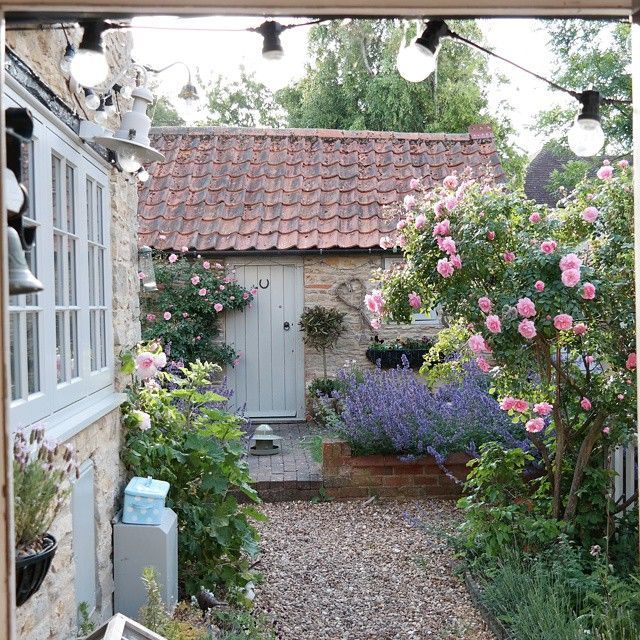23 cottage garden shade ideas
Cottage garden
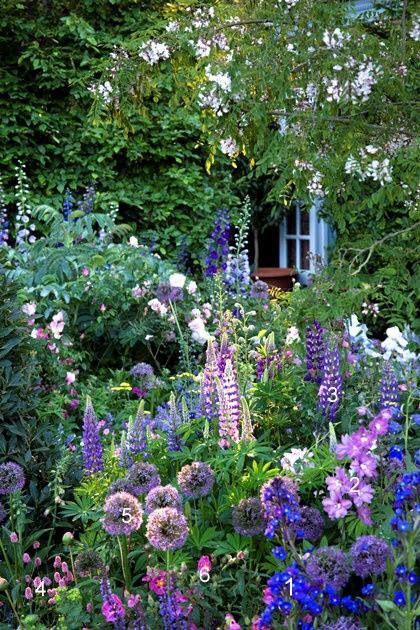
These beautiful compact shade plants can be used as perennial ground cover which will add interest to your garden while helping to keep the weeds down. I love growing these compact perennial plants under shade loving shrubs and backyard trees. Perennial Ground Cover Plants Compact perennial plants that can be planted under taller plants add interesting layers to your garden and help to keep the weeds down. Although there are some perennial ground cover plants that bloom brilliantly in the shade, many rely more on foliage and color variations rather than flowers to create interest. I find that dense planting of shade tolerant perennials requires very little maintenance and minimal weeding, as long as they are adequately watered. I also amend the soil with compost and triple mix prior to planting and use a thick layer of mulch to retain moisture and restore nutrients. Keep reading to see some of my favorite compact shade perennials that grow to be less than 18â high, and are excellent ground covers. Want to find some taller plants that will grow in the shade? Click here to see our article on Bushes To Plant Under Trees. Hellebore (Lenten Rose or Christmas Rose) Hellebores make a great addition to the shade border Bloom time: Early Spring to Summer Zones: 4 â 9 Hellebore is one of the first plants to bloom in the spring, earning it the nickname âChristmas roseâ. But even though it starts early, it can continue to blossom all summer. White Hellebore The foliage is evergreen and low growingâwhich makes it a perfect plant for the front of a shady border. Picotee Hellebore The blooms range in color from cream, light green, speckled pink or burgundy to glorious double pink or white in the hybrid âEllenâ series. The only maintenance I do, is to tidy the appearance by removing any dead leaves. Double Hellebore They have become very popular, which means new varieties are coming out all the time, like these ones with double flowers. Purple Hellebore Or these purple ones. Find more information about growing Hellebores HERE. Virginia Bluebells (Mertensia virginica) Virginia Bluebells Bloom time: Early Spring to Summer Zones: 3 â 8 Virginia Blue Bells is a lovely native plant, commonly referred to as Virginia cowslip, which produces bell shaped flowers that start out pink and mature to lavender blue. Virginia Bluebells with Hellebore It goes completely dormant after blooming in the spring, which gives me an opportunity to double plant with Japanese painted fern (another one of our perennial ground cover plants for shade). Virginia blue bells with ferns, hostas and hellebores Brunnera macrophylla âJack Frostâ Brunnera Macrophyla âJack Frostâ Bloom time: Spring Zones: 3 â 8 âJack Frostâ Brunnera has gorgeous large, variegated, silver heart-shaped leaves, and sports dainty blue flowers in the spring. Brunnera By A. Barra (Own work) [GFDL or CC BY-SA 4.0-3.0-2.5-2.0-1.0], via Wikimedia Commons If it is kept consistently moist, it rewards with a lovely mounded plant that fairly glows in the shaded environment. Leave the foliage to protect the crown over winter and trim it back in the spring. Trillium Trilliums growing through ground cover Bloom Time: Spring Zones: 4 â 9 I like to plant Trilliums under rhododendrons and evergreens to enjoy the distinctive white or red blooms. Since this native plant likes rich acid soil, it is very happy being situated with these other acid-loving plants. It is a little particular about being disturbed after it has been planted so try to plant it in its forever home right from the beginning. If the foliage or blossom is broken the plant will not bloom for two years and may even die. White trillium Although it spreads by rhizomes (and will naturalize), it is not at all invasive and co-exists easily with other spring plants. Once the weather starts to get warmer, Trilliums go completely dormant. You might want to mark their location so that you donât accidentally dig them up. Trillium is the official flower of the Canadian province of Ontario and the State of Ohio. Bleeding Heart (Dicentra) Bleeding Heart By Wuzur (Own work) [GFDL or CC BY-SA 3.0], via Wikimedia Commons Bloom Time: Spring Zones: 3 â 9 Bleeding heart is another one of the spring blooming low growing perennials that goes dormant in the summer. But the blooms are so beautiful that itâs definitely worth having in your shade perennial border. Columbine (Aquilegia) Blue Columbine Bloom Time: Spring Zones: 3 â 9 Columbines have pretty flowers that come in many different colors above lacy foliage and are just an all-around pretty plant. Columbine By Ulf Eliasson (Own work) [GFDL, CC-BY-SA-3.0 or CC BY 2.5], via Wikimedia Commons They do tend to self-seed (although not too aggressively) so you may find them growing up in places where you didnât expect them. But I like them so much I usually just let them grown where they want to! Hosta Hostas along path Bloom Time: Summer Zones: 3 â 9 Hosta is an old standby perennial ground cover that now is available in a variety of variations, leaf and plant size. Lime green Hosta I like to put those varieties that have cream, white, or lime green leaves in the darkest spots so that they pop, particularly at night. Variegated Hosta I have a particular fondness for the tough, leathery or waxy leaved hostas because they repel slugs and maintain neat mounds. By Anna reg (Own work) [GFDL or CC BY-SA 3.0 at], via Wikimedia Commons Most hostas bloom mauve or white in summer. Hostas surrounding a statue Astilbe Astilbe with pink blooms Bloom time: Summer Zones: 4 â 8 Commonly called âfoam flowerâ, Astilbeâs fern like leaves and delicate blooms add interest to any shady spot. Astilbe under a Japanese Maple Astilbe comes in a variety of colors to match your color scheme. It will also grow in a variety of light conditions, so be sure to read the growers tag and choose those varieties identified as preferring shady conditions. Hydrangea Hydrangea Macrophylla Bloom time: Summer Zones: 4 â 9 There are now many Dwarf hydrangeas that can be included in the shade garden. Technically they are bushes but I love them so much that I feel compelled to mention them here. Cityline Hydrangea The Cityline series is bred for compactness. Pink Lacecap Hydrangea The color of the blooms of most hydrangeas depends upon the acidity (blue) or alkalinity (pink) of the soil. Hydrangea Macrophylia âPistachioâ I particularly like Hydrangea macrophylla âPistachioâ because it is a dwarf plant with different colors than you normally see in Hydrangeas (red blooms with lime green centers), and the color is unaffected by soil PH. Hydrangea bushes typically bloom all summer and into the fall. Note: There are a few different varieties of Hydrangea with different sunlight requirements, so make sure you are getting one that is meant to grow in the shade. Click HERE to get more information on Hydrangeas. Chinese Hardy Ground Orchid (Bletilla striata) Hardy Ground Orchid By KENPEI (KENPEIâs photo) [GFDL, CC-BY-SA-3.0 or CC BY-SA 2.1 jp], via Wikimedia Commons Bloom time: Summer Zones: 6 â 9 These Chinese hardy ground orchids are quite easy to grow and really do look like orchids. They grow between 12? and 24? high (depending on the variety) and will develop many blooms per plant once they are established. The only trouble I have with them is that rabbits really like the leaves! Japanese Anemone (Anemone huphensis) Japanese Anemone Bloom Time: Fall Zones: 3 â 9 One of the highlights of my fall garden is Japanese anemone. It shows off with a multitude of cheerful pink or white flowers. Japanese Anemone in the garden Japanese anemone is a late bloomer; so the plant stays dormant until late spring. I plant fern peony in beside it because it is fading by the time the anemone starts to sprout. Japanese Anemone At 3? high, this plant is a little tall for a garden border but I stake it and let it be. It always gets many appreciative comments from passersby. Japanese Painted Fern (Athyrium niponicum) Ferns and Columbine Foliage Only Zones: 4 â 9 Japanese painted ferns are a boon to garden designers. With their blue green leaves, burgundy variations, and compact growth habit they are extremely interesting. Japanese Painted Fern âPictumâ Variation âpictumâ has red stems and pewter colored leaves that reflect light. Japanese Painted Fern âGhostâ Whereas âghostâ has whitish green fronds that brighten up a dark space. European Ginger (Asarum europaeum) European Ginger Bloom Time: Spring Zones: 2 â 9 Ginger is perfect for ground cover under a bush or grown among rocks. The European variety has attractive round shiny leaves and grows much slower than North American wild ginger. Although it blooms in the spring, the blooms are insignificant and most gardeners plant it for its beautiful foliage. Golden Japanese Forest Grass (Hakonechloa macra âAureolaâ) Golden Japanese Forest Grass Foliage Only Zones: 5 â 8 Glowing with strands of gold that are banded in green, Japanese forest grass drapes gracefully over rock borders or edges of walls. Its brightly colored leaves really stand out in the shade. Japanese Forest Grass with Hostas Japanese forest grass is a low maintenance bright edging that flutters in the breeze. Coral Bells (Heuchera) Coral Bells with dark leaves and white flowers Bloom time: Spring Zones: 4 â 9 Commonly called coral bells, Heuchera foliage provides great color in the shade garden. The leaves come in a range of hues from almost black, dark purple, chartreuse, peach and orange and have an interesting lobed shape. It does not like to be planted too deep, so set the crown at ground level. This plant does have insignificant little flowers, but it is mainly grown for its beautiful foliage. It was named Plant of the Year in 2012. Do you have any favorite perennial ground cover plants for the shade? Tell us in the section below. Sharing is caring! 56.7k 7 0



